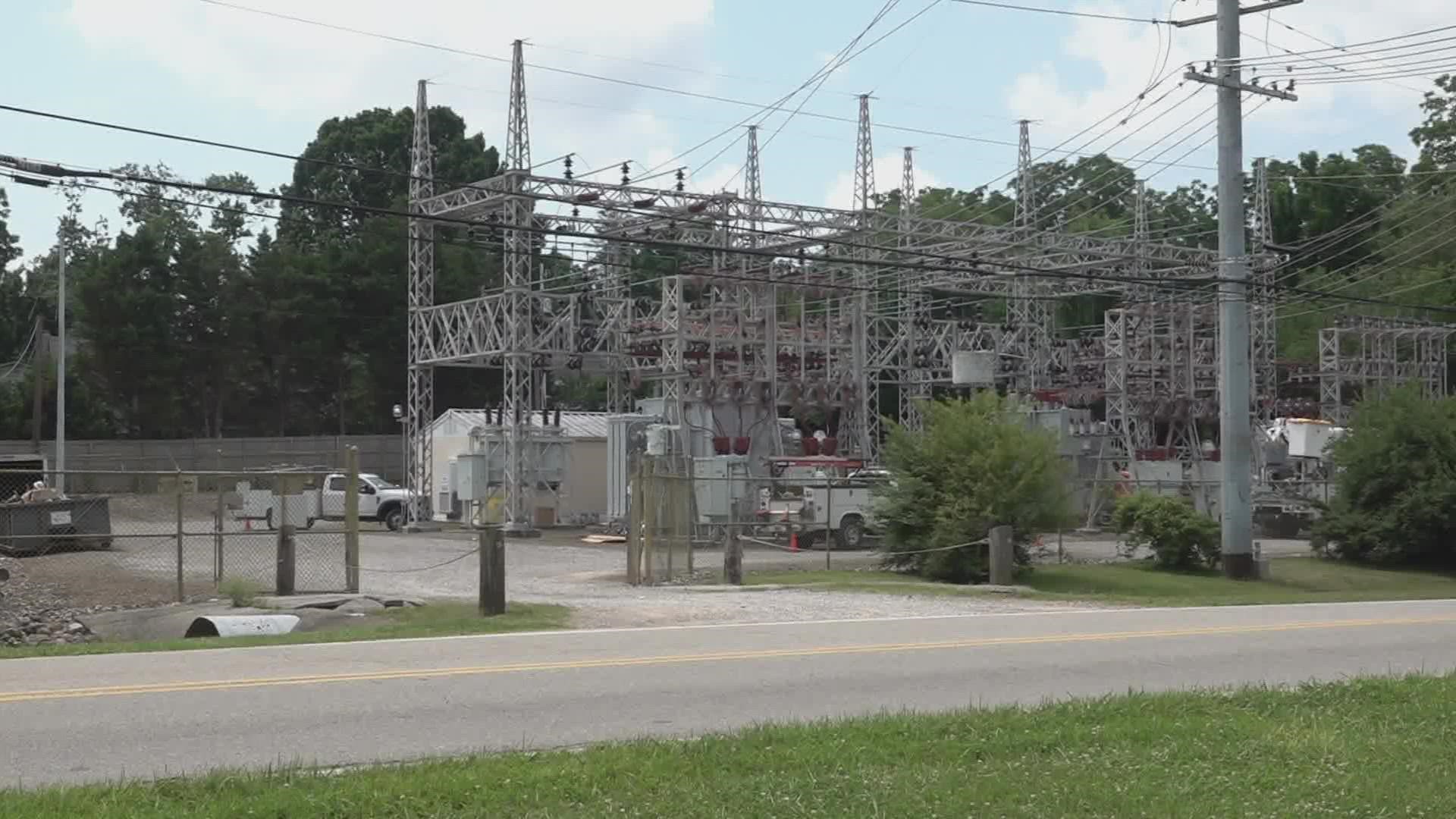KNOXVILLE, Tenn. — The Tennessee Valley Authority released a timeline of events that led to rolling blackouts that affected households across the region during extremely cold temperatures.
TVA said it has more than 32,000 megawatts of its own generation and 6,000 megawatts of contracts.
The amount is "more than enough to meet demand in most situations," according to TVA.
Before the arctic blast
On Dec. 16, TVA posted money-saving tips on its website to help consumers save money during the approaching winter storm. It was shared on TVA's social media accounts and "many regional outlets" ran the story the week before Christmas.
"This is normal procedure for us before weather events to help people save money and lower consumption," TVA said regarding the tips.
The artic blast moves in
On Dec. 23, a blast of arctic air hit East Tennessee. Temperatures plummeted from a high of 47 to 4 degrees in a few hours.
"The National Weather Service referred to it as a once-in-a-generation storm. And, it was," TVA said regarding the weather event.
Temperatures and wind gusts affected protective structures around TVA's generating units, including the Cumberland Fossil Plant and some natural gas plants that TVA did not identify.
TVA said it saw several days of sustained single-digit temperatures across its seven-state region and record-setting power demand.
On Dec. 23, TVA broke its all-time record for single-day energy demand (740 gigawatt-hours, or 740,000,000 kilowatt-hours), as well as its highest winter peak power demand (3,425 megawatts). On Dec. 24, TVA saw its highest weekend peak power demand in TVA history at 31,756 megawatts.
"To compare, TVA’s average peak load is 22,600 megawatts and the average hourly load across the system on Dec. 23 was 36% higher than our average peak," TVA said.
What went wrong?
The TVA said that preliminary information shows that the Cumberland plant, which provides approximately 2,500 megawatts of power, was impacted by the extreme temperatures and high winds and went offline early Dec. 23.
"In this instance, critical instrumentation located on the top of the boiler for both units faced the brunt of the extreme conditions, causing the instrumentation to freeze and the units to go offline," TVA said.
Gas plants also went offline during the cold weather. TVA said it will "have more details on the gas plants once the review is completed."
TVA said crews worked 24/7 to restore some of the impacted generating units to service during the weather event. It also purchased and imported generation from neighboring markets as much as it could. However, it proved challenging as surrounding utilities and market operators were also experiencing high demand.
Rolling blackouts
On Dec. 23 and Dec. 24, TVA purchased an average of 5,433 megawatts per hour.
"TVA’s direct-serve and industrial customers, through contractual obligations and beyond, were able to reduce their consumption," the TVA said.
Preliminary results show participants in Demand Response programs provided around 1500 megawatts of relief during the weather event. These actions were taken before TVA implemented the rolling blackouts.
TVA issued the rolling blackouts on two occasions:
- Friday, Dec. 23 from 9:31 a.m. to 11:43 a.m.
- Saturday, Dec. 24 from 4:51 a.m. to 10:31 a.m.
"Any power disruptions directly associated with TVA’s directive were intended to cause power interruptions of only 30 minutes or less," TVA said.
TVA addresses backlash
"We recognize the disruptive impact we had on our customers. This is not how we want to serve our customers, and we recognize we fell short of the public’s expectations to deliver reliable electricity 24/7, even under extreme conditions," TVA said regarding the rolling blackouts.
TVA is conducting a "comprehensive and thorough" review of the actions taken both before and during the event. Some of the actions they are reviewing include:
- Ensuring the correct steps were taken to prepare for extreme winter temperatures
- Ensuring that TVA is investing the proper time and resources in critical equipment
- Emergency plan operations—especially those pertaining to TVA's Emergency Load Curtailment Program
- Communication with local power companies, industrial customers, key stakeholders and the public
"This review will be transparent and will move with a sense of urgency as we identify gaps, layout corrective action plans and make the necessary changes to allow us to better respond to such challenging events in the future. We know there is work to do to fully restore confidence in TVA’s ability to reliably provide the energy 10 million people count on every day, and we are committed to meet that expectation for the future," TVA said.
TVA said it has experienced nearly 3% demand growth from 2019 to 2022, after a decade of nearly flat load growth. Due to the strong economics across the region, demand is increasing.
TVA expects a 1% per year demand growth over the next three years. In alignment with the 2019 Integrated Resource Plan, TVA is working to add additional capacity, while investing in existing assets and new technologies.
"We anticipate adding 10,000-14,000 megawatts of new resources by the end of this decade," TVA said.

